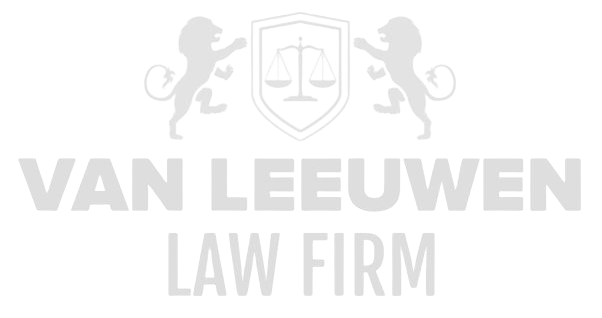The fight against money laundering (Anti-Money Laundering, AML) and terrorist financing (Counter-Terrorist Financing, CTF) forms a crucial line of defense in protecting national and international security. In a world where financial networks are becoming increasingly complex and digital, and capital flows move across borders at unprecedented speeds, AML/CTF is no longer merely an administrative compliance framework but a pillar of global stability and legal integrity. Executives in the highest governing bodies—the so-called C-suite—find themselves in a highly delicate position, having to balance commercial interests against moral and constitutional obligations. Implementing robust AML/CTF programs requires a keen understanding of both the letter and spirit of international treaties, national laws and regulations, and the maze of supervisory mechanisms ensuring compliance. A superficial approach to this matter can lead not only to financial penalties but also to irreparable reputational damage and even criminal liability for natural persons within the organization.
The extent to which AML and CTF regulations are intertwined with global geopolitical tensions must not be underestimated. Terrorist networks and organized criminal groups do not operate within sovereign state borders but manifest as parasitic entities feeding on the vulnerabilities of the international financial system. This implies that measures taken by the private sector—and especially by actors in banking, fintech, and investment sectors—carry not only legal dimensions but also ethical, strategic, and diplomatic ones. The ability to analyze cross-border transactions, construct risk profiles, and recognize suspicious patterns is essential. In this context, ensuring compliant behavior requires not merely drafting protocols and policy documents but fostering an institutional culture where alertness, integrity, and interdisciplinary cooperation predominate. The C-suite must act as guardian of this balance, as even the slightest appearance of negligence can lead to the infiltration of criminal elements within legitimate corporate structures.
AML Risk Governance
An effective AML policy stands or falls with a well-thought-out and robust governance model. AML Risk Governance comprises the mechanisms, structures, and procedures overseeing the strategic management and monitoring of risks arising from money laundering practices. This governance is not solely the responsibility of the compliance department but belongs to the core domain of strategic leadership. When executives fail to establish a risk appetite regarding AML, a vacuum is created in which illicit transactions can take place unnoticed. The governance structure must provide clarity on roles, responsibilities, and escalation paths, with independent oversight being essential. Audit committees and external supervisors must be actively informed about significant developments and potential risks.
The degree of independence of supervision within the AML Risk Governance structure cannot be taken lightly. Internal audit functions must have unrestricted access to relevant information, without fear of political repercussions or internal power dynamics. Moreover, the board must receive frequent and structured reports on risk-sensitive areas; relying solely on aggregated data is insufficient. It is precisely the anomalies, the deviations from patterns, that serve as harbingers of money laundering schemes and thus require special attention. In this respect, governance should not be viewed as a passive control function but as a proactive and anticipatory mechanism, with periodic reviews of the risk framework being necessary.
A crucial aspect of effective AML Risk Governance is integrating risk management into the organization’s strategic decision-making. Decisions regarding new markets, products, or customer segments must be subjected to strict AML risk assessments. Failure to do so risks the organization engaging with jurisdictions or parties under heightened scrutiny. In this regard, governance must also provide an escalation mechanism enabling executives to reverse decisions when AML risks prove disproportionate. The strength of governance lies not in rigidity but in agility and the ability to self-correct.
Finally, AML Risk Governance requires a culture of continuous evaluation and refinement. In a world where money laundering methods constantly evolve, no governance model can permanently be deemed adequate. Governance must continuously adapt to new threats, new typologies, and changing legislation. This also implies periodic testing of the governance framework by external experts capable of independently and critically assessing the system’s effectiveness. Only in such a context can governance truly function as a shield against the undermining of the financial system.
AML Transformation
AML transformation is the systematic restructuring of processes, systems, and culture aimed at creating a future-proof and effective compliance framework. This transformation is by no means a cosmetic operation but a profound intervention that affects the foundations of the business model. In many cases, AML transformation results from years of negligence, insufficient investment in technology, or organic growth that was not accompanied by a proportional expansion of compliance capacity. The need for transformation typically becomes apparent only when supervisors signal serious shortcomings or when the organization is involved in incidents compromising the system’s integrity.
The transformation process requires a multidisciplinary approach where legal, technological, and organizational expertise converge. It is insufficient merely to digitize existing processes; a fundamental reconsideration must take place on how risks are identified, assessed, and mitigated. Implementing advanced technologies such as AI-driven transaction monitoring, real-time screening, and automated reporting systems can significantly accelerate and deepen the AML process. However, these technologies are only as effective as the algorithms that power them and the datasets that feed them. Incorrect assumptions or incomplete data can lead to both false positives and missed genuinely suspicious activities.
AML transformation also calls for a recalibration of organizational relationships. Often, it is necessary to strengthen the mandate of compliance departments, ensure their independence, and formalize their access to decision-making bodies. The position of compliance within the hierarchical structure must be reconsidered, with vertical integration and horizontal collaboration with operational departments being crucial. Moreover, it is essential that the C-suite acts not merely as a commissioner but as an active participant in the transformation process. Only then can shared ownership arise over the objectives and intended results of the transformation.
An additional aspect of AML transformation involves dealing with historical shortcomings—so-called legacy issues. Often, organizations harbor reservoirs of inactive or incompletely verified customers, outdated files, and unresolved reports posing acute risks. Transformation thus also implies drafting a strategic plan for remediation, catching up on backlogs, and cleansing customer data. This historical burden poses not only a risk of possible sanctions but also hampers the effectiveness of new systems and processes. Only when the past is cleansed can the future be confidently shaped.
AML Training
AML training forms the intellectual and moral backbone of every organization involved in detecting and combating money laundering practices. Educating employees—from operational levels up to the boardroom—is not an optional activity but a legal, strategic, and ethical obligation. AML training should not be limited to merely imparting theoretical knowledge but must primarily focus on developing a risk-aware attitude, critical thinking skills, and practical competence. Every employee must be aware of the signs of potential money laundering activities and the obligation to report these via the designated channels.
The effectiveness of AML training is closely linked to how well the content is tailored to the specific roles and responsibilities within the organization. A generic training program, disconnected from the concrete risks encountered in practice, inevitably leads to cognitive dissonance and inertia. Therefore, training must be segmented and modular, so every employee—from cashier to chief risk officer—is provided with relevant and applicable knowledge. Moreover, it is essential that training sessions are periodically repeated and updated based on changing laws and regulations, new laundering methods, and insights from incident analyses.
An effective AML training program goes beyond traditional e-learning modules. It should also consist of interactive sessions, case discussions, simulations, and workshops where employees are challenged to analyze complex situations and arrive at informed assessments. Such settings develop moral judgment skills—an ability essential in gray areas where the law only partially provides guidance. Training should also familiarize participants with the consequences of negligent behavior—not only at the individual level but for the integrity of the entire organization and society as a whole.
Embedding AML training within HR policy is equally vital. Training must not be a one-time requirement ticked off at onboarding but a continuous trajectory embedded in performance reviews, appraisal processes, and reward systems. Only when compliance is no longer viewed as an administrative burden but as an integral part of professional conduct can AML training truly realize its potential. In that context, training is not just a learning process but an ethical formation, arming the organization against internal subversion.
CTF Training
CTF training—focused on recognizing, analyzing, and reporting signals of terrorist financing—requires a specific approach that goes beyond traditional AML training. Terrorist financing is characterized by atypical patterns, smaller amounts, and a greater degree of ideological motivation. This means employees must be trained not only in technical skills but also in geopolitical awareness, cultural sensitivity, and recognizing indirect involvement. The complexity of CTF requires in-depth knowledge of sanctions regimes, international lists of sanctioned individuals and organizations, and the ability to link seemingly innocuous transactions.
Effective CTF training must include comprehensive modules on the modus operandi of terrorist organizations, their funding sources, and logistical structures. This knowledge is indispensable to understand how and why certain transactions may be flagged as suspicious. Participants must also be familiar with indicators such as unusual money transfers to high-risk jurisdictions, frequent small deposits just below the reporting threshold, or the use of unusual payment services. The training must have a strong analytical character, teaching employees to contextualize information, establish connections, and escalate timely.
Furthermore, CTF training must anticipate the psychological barriers employees may face when identifying potential CTF activities. Fear of making mistakes, stigmatizing customers, or damaging the organization’s reputation can lead to passivity. Training must explicitly address these fears and provide participants with clear frameworks within which they can act. Additionally, attention must be given to the ethical aspects of CTF, such as the tension between privacy protection and security and the importance of proportionality in measures taken.
Finally, CTF training is a continuous process. Geopolitical shifts, the emergence of new conflict zones, and the evolution of terrorist networks require knowledge to be constantly updated. This demands an adaptive learning environment where practical signals are immediately translated into teaching materials and where collaboration is sought with external experts, intelligence professionals, and academics. Only through this integrated approach can CTF training fulfill its essential role within the broader strategy of risk management and social responsibility.
CPF Training
Counter-Proliferation Financing (CPF) training, a field that until recently received only marginal attention within the traditional AML/CTF context, has evolved into an essential component of the integrated security architecture. CPF focuses on preventing the financial support of the development, production, storage, and dissemination of weapons of mass destruction—including nuclear, biological, and chemical weapons—by non-state actors and regimes subject to international sanctions. This training requires in-depth knowledge of complex international treaties, sanction mechanisms such as those of the United Nations and the European Union, and technological export restrictions. The implications of failure in this context transcend any commercial consideration: facilitating proliferation violations can result not only in severe criminal penalties but also pose a direct threat to international peace and security.
Effective CPF training requires staff to understand the mechanisms of proliferation and how financial flows underpin them. This involves not only direct payments to parties involved in weapons programs but more often indirect and concealed transactions through intermediaries, front companies, dual-use goods, and high-risk export routes. Identifying such structures demands keen attention to detail, a geo-economic reference framework, and the ability to assess technical documentation such as export licenses and certificates of origin for authenticity and completeness. CPF training must equip staff with concrete scenarios where these risks may manifest, as well as tools to escalate them promptly within the organization.
The complexity of CPF is heightened by the fact that actors involved in proliferation financing typically operate with a high degree of professionalism and use legitimate-looking corporate structures. This increases the risk that bona fide institutions may become inadvertently and unknowingly involved in prohibited activities. CPF training must therefore present a nuanced view of the boundary between permissible international trade and prohibited proliferation involvement. This boundary is rarely clear-cut and requires seasoned judgment, professional restraint, and continuous dialogue with legal and technical experts both inside and outside the organization.
Finally, CPF training must never be seen as a standalone exercise. It should be embedded within the broader framework of export control, sanctions law, geopolitical risk analysis, and corporate due diligence. Integrating CPF insights into existing AML and CTF processes plays a key role. Training must focus not only on awareness but on institutional embedding: translating insights into concrete policy measures, customer acceptance criteria, product development strategies, and monitoring procedures. Only when CPF is recognized as a strategic compliance priority can one speak of a robust and credible line of defense against proliferation violations.
AML Remediation
AML remediation encompasses the process of restoring and correcting deficient or non-compliant AML practices within an organization. This is rarely a purely technical matter; it usually involves a large-scale, far-reaching operation that re-examines the past, uncovers irregularities, and implements corrective actions with an eye to the future. Remediation is often triggered by supervisory interventions, internal audits, or external incidents indicating structural shortcomings in the AML framework. It is a phase in which systemic failure becomes fully visible—and where legal, operational, and reputational risks become acutely manifest.
The first step in an effective remediation process is a comprehensive inventory of the current situation. This requires a forensic approach, scrutinizing customer files, transaction histories, internal reports, and decision-making processes down to the detail. It is not merely about correcting missing data or updating customer information, but analyzing the root causes of the failure. Were risk indicators ignored? Did the detection system fail? Were there deliberate omissions or structural negligence? Answering these questions is crucial to prevent recurrence.
Next, a strategic action plan must be developed, clearly outlining priorities, timelines, resources, and responsible officers. Remediation is a resource-intensive process that entails significant costs, staffing, and operational impact. It therefore requires commitment from the highest level of governance, as well as continuous evaluation of progress, effectiveness, and proportionality. When remediation is conducted under regulatory oversight, transparent communication and documentation are crucial to restoring trust and avoiding further escalation—such as fines or license revocation.
A key component of remediation is restructuring the systems and processes that contributed to the failure. This may include implementing new transaction monitoring software, redefining risk categories, or retraining staff. Remediation thus aims not only to correct past mistakes but to build sustainable, future-proof compliance capacity. In this context, it is advisable to involve independent third parties such as external forensic accountants or specialized legal counsel to assess the effectiveness of the measures.
Finally, remediation should be seen as an opportunity for institutional renewal. Though initially it may appear to be a defensive response to external pressure, if executed properly, it can lead to a fundamental strengthening of the organization. Remediation reveals where vulnerabilities lie, which cultural elements are counterproductive, and where synergy is possible between compliance, legal, operations, and IT. In this sense, remediation is not merely repair, but transformation; not just reconstruction, but a recalibration of the values and standards on which the organization is based.
Transaction Monitoring and Screening
Transaction Monitoring and Screening form the beating heart of any effective AML/CTF program. While policies and procedures provide the structural framework of compliance, it is the actual monitoring of financial transactions that determines its practical effectiveness. The ability to detect unusual patterns, identify high-risk transactions, and respond appropriately is a vital tool in the fight against financial and economic crime. Transaction monitoring is not a static process: it requires constant adaptability, interpretive skills, and technological sophistication to keep pace with the ever-evolving methods of criminals.
The core of a robust monitoring system lies in the ability to analyze transactions in real time or in batches based on predefined risk parameters. These parameters—such as geographic origin, involved parties, transaction size, and volume—must be continuously recalibrated based on emerging threats, case law, and FATF recommendations. However, the effectiveness of such a system is entirely dependent on the quality of the underlying data. Incomplete or incorrect customer information inevitably leads to blind spots and increases the risk of missing critical signals. Therefore, transaction monitoring must not be seen in isolation but as the final link in an integrated data management policy.
Screening involves checking customers, relationships, and transactions against internal and external lists of sanctioned individuals, entities, and countries. This includes not only sanction lists from the United Nations, the EU, OFAC, and national governments but also lists of PEPs (Politically Exposed Persons), adverse media, and negative news reports. The complexity of screening lies in interpreting hits: is there a genuine match or a false positive? How should one handle partial matches or translated names? In this context, it is essential that staff not only have access to technological tools but also possess analytical skills and legal interpretive capacity.
A common pitfall in the monitoring process is signal overload, where legitimate transactions are mistakenly flagged as suspicious. This not only burdens compliance capacity unnecessarily but also increases the risk that real warning signs will be overlooked. Therefore, systems must be augmented with machine learning technologies capable of adapting to changing customer behavior and historical insights. At the same time, one must remain alert to the danger of automation bias, where human judgment is unjustly overridden by technological decision logic. Monitoring is—and remains—a combination of technology and critical thinking.
Finally, effective transaction monitoring and screening require a culture of alertness, feedback, and continuous improvement. Every incident, missed alert, or unwarranted block must be analyzed to enhance the system. Monitoring is not an endpoint but a cyclical process in which signals lead to insight, and insight leads to policy adjustment. Only in such a reflexive and learning environment can transaction monitoring evolve into a truly effective defense against money laundering, terrorism financing, and proliferation risks.
Know Your Assets
Know Your Assets (KYA) forms a strategic and operational part of the broader due diligence policy that is essential for any organization operating within the AML, CTF, and CPF domains. Unlike the more familiar principles of Know Your Customer (KYC), KYA focuses on the identification, classification, valuation, and monitoring of assets—both tangible and intangible—that fall within the organization’s sphere of influence. This extends to physical assets such as real estate and vehicles, but also to financial instruments, intellectual property, digital currencies, art, goods in transit, and even indirect interests in joint ventures and subsidiaries. Failure to accurately map these assets creates latent risks that can lead to involvement in money laundering schemes, sanction violations, or proliferation financing—whether knowingly or unknowingly.
The implementation of an effective KYA framework requires a detailed inventory of assets across the entire organization—including entities located abroad or operating under different legal systems. This inventory is not merely accounting-based; it demands in-depth legal and forensic analysis to determine who the ultimate owners of the assets are, under what contractual conditions the assets are held, and whether they are linked to persons or entities subject to sanction regimes or adverse media coverage. Such risks often manifest in assets acquired through mergers or acquisitions where insufficient due diligence was performed. KYA prevents organizations from unknowingly managing legally tainted assets.
Systematically classifying assets based on risk is crucial within the KYA process. Assets located in high-risk jurisdictions, owned by complex trust structures, or easily tradable through informal markets require an elevated risk profile. In this regard, artworks, precious metals, cryptocurrencies, and high-end consumer goods are particularly relevant. Criminals frequently exploit such assets to conceal or move illicit proceeds outside the view of the regulated financial sector. By placing such assets under a stringent compliance regime, early detection of misuse is possible.
An essential but often underestimated aspect of KYA is establishing a dynamic monitoring structure. Assets continuously change ownership, value, use, or location. This means that a one-time assessment is completely insufficient. It requires ongoing risk recalibration, periodic audits, and the use of technology to detect changes. In this context, it is advisable to use integrated asset management tools that can be linked to external data sources, such as land registries, Ultimate Beneficial Owner (UBO) databases, trade registers, and sanction lists. Only through this technological integration can a real-time, risk-driven overview be created that meets the requirements imposed by supervisors in an international context where assets cross physical borders.
Business Wide Risk Assessment
The Business Wide Risk Assessment (BWRA) forms the foundation of every AML/CTF/CPF compliance program. This holistic risk assessment systematically maps all risks inherent to the nature, scale, complexity, and geographical scope of business activities. The BWRA thereby transcends individual customer or transaction analysis and positions itself as a strategic compass for integrated risk management. It is not merely a compliance requirement but a tool of managerial accountability. Failure to perform an adequate BWRA—or conducting a superficial, cosmetic exercise—has far-reaching legal, financial, and reputational consequences, which can translate into fines, license revocations, and personal liability for decision-makers.
An effective BWRA starts with the identification of relevant risk factors: customer profiles, products, services, distribution channels, technologies used, operational processes, and last but not least, the geographic spread of activities. These risk factors are assessed for their inherent vulnerability to money laundering, terrorism financing, and proliferation, as well as the effectiveness of the controls mitigating these risks. A clear distinction must be made between inherent risks and residual risks, so it is evident where the organization stands within the risk spectrum.
Performing a BWRA requires a methodologically consistent and transparent approach. This means risks must be quantified based on objective and reproducible criteria, minimizing subjective judgments. In this context, the use of risk scoring models, risk rating tables, and empirically supported scenario analyses is indispensable. Furthermore, the BWRA must have formal approval by the highest governing body and be part of the corporate governance cycle. A BWRA not embedded in decision-making is nothing more than a paper exercise.
A dynamic BWRA requires periodic updating—at least annually, but more frequently if significant changes occur in the external or internal risk context. Examples include the introduction of new products or services, entry into new markets, legislative changes, or notable incidents within the sector. In this context, it is insufficient to view the BWRA as merely a compliance obligation: it must be living evidence of the organization’s risk awareness. Only in an environment where risk assessment is not delegated to a staff function but where risk ownership is embraced at executive level can a BWRA fulfill its true function.
Finally, the BWRA has a dual function: on the one hand, it serves as the starting point for the design of risk-based controls such as customer acceptance, transaction monitoring, and screening; on the other hand, it functions as an accountability document toward supervisors. In that regard, it must be internally consistent and substantiated, as well as withstand external scrutiny. A BWRA that is not transparently constructed or cannot be reconstructed is generally considered insufficient by supervisors. In the spirit of FATF Recommendations 1 and 26, every organization must be able to demonstrate that it understands, controls, and proactively adapts its risk profile. Only then can it legitimize its position as an honest, reliable actor within the global financial ecosystem.








